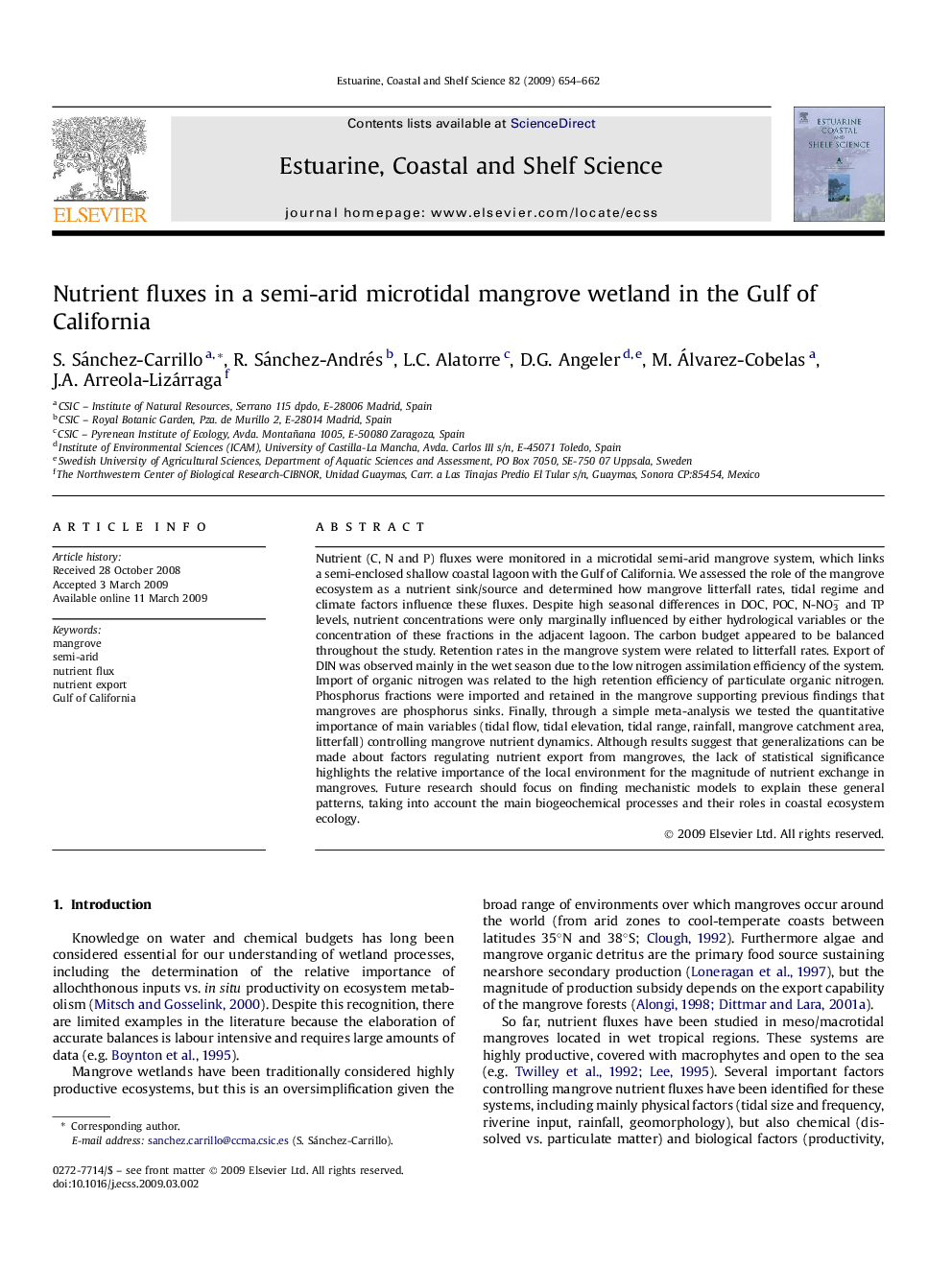| Article ID | Journal | Published Year | Pages | File Type |
|---|---|---|---|---|
| 4541139 | Estuarine, Coastal and Shelf Science | 2009 | 9 Pages |
Nutrient (C, N and P) fluxes were monitored in a microtidal semi-arid mangrove system, which links a semi-enclosed shallow coastal lagoon with the Gulf of California. We assessed the role of the mangrove ecosystem as a nutrient sink/source and determined how mangrove litterfall rates, tidal regime and climate factors influence these fluxes. Despite high seasonal differences in DOC, POC, N-NO3− and TP levels, nutrient concentrations were only marginally influenced by either hydrological variables or the concentration of these fractions in the adjacent lagoon. The carbon budget appeared to be balanced throughout the study. Retention rates in the mangrove system were related to litterfall rates. Export of DIN was observed mainly in the wet season due to the low nitrogen assimilation efficiency of the system. Import of organic nitrogen was related to the high retention efficiency of particulate organic nitrogen. Phosphorus fractions were imported and retained in the mangrove supporting previous findings that mangroves are phosphorus sinks. Finally, through a simple meta-analysis we tested the quantitative importance of main variables (tidal flow, tidal elevation, tidal range, rainfall, mangrove catchment area, litterfall) controlling mangrove nutrient dynamics. Although results suggest that generalizations can be made about factors regulating nutrient export from mangroves, the lack of statistical significance highlights the relative importance of the local environment for the magnitude of nutrient exchange in mangroves. Future research should focus on finding mechanistic models to explain these general patterns, taking into account the main biogeochemical processes and their roles in coastal ecosystem ecology.
